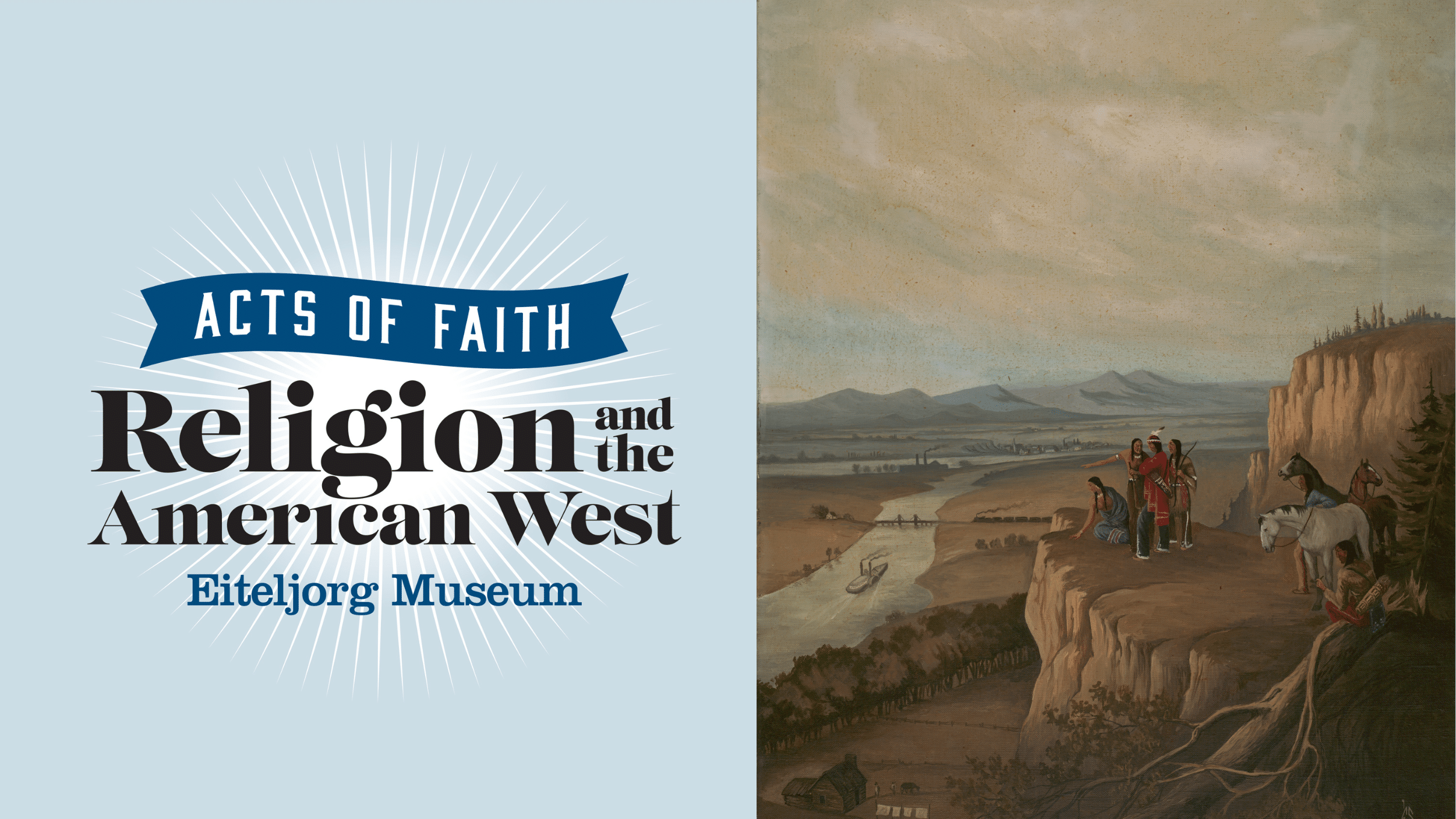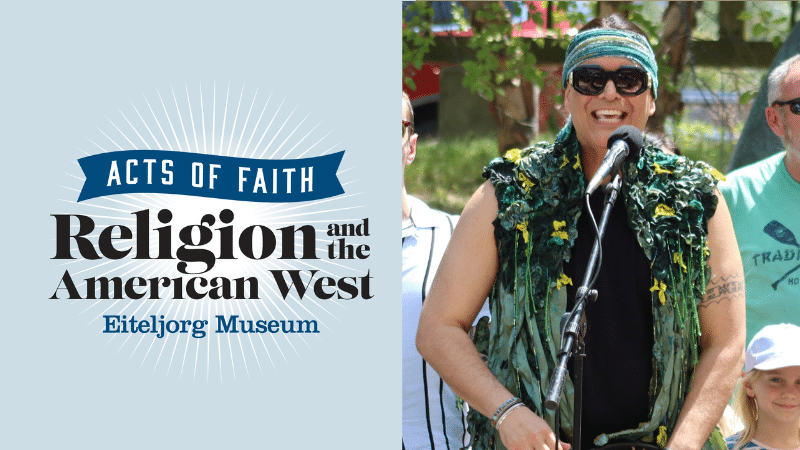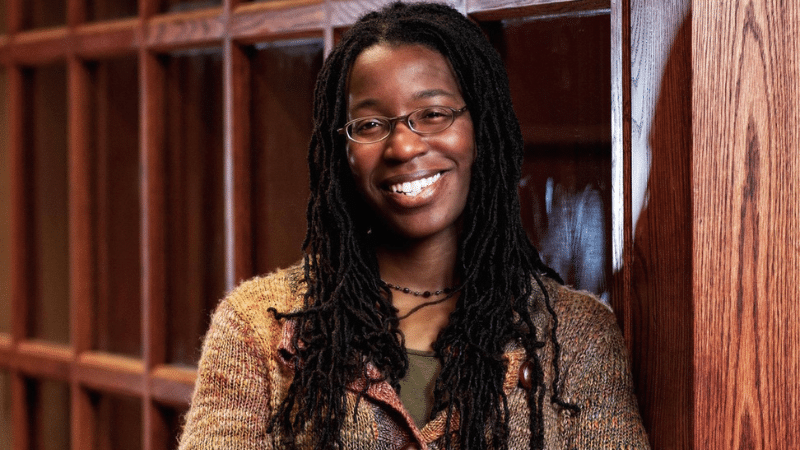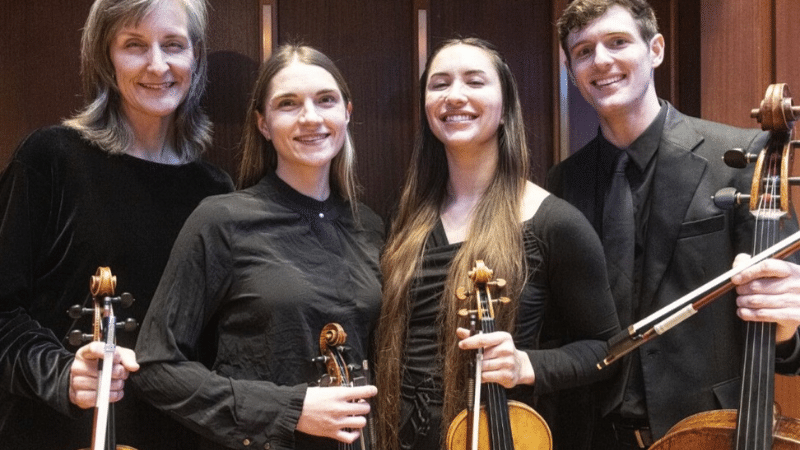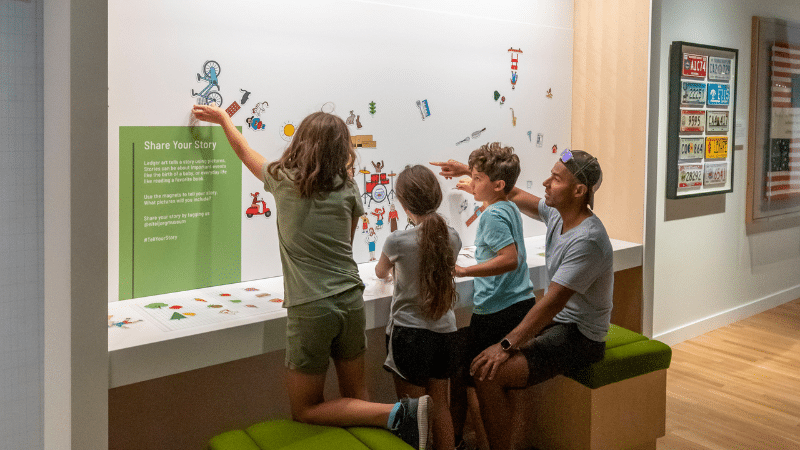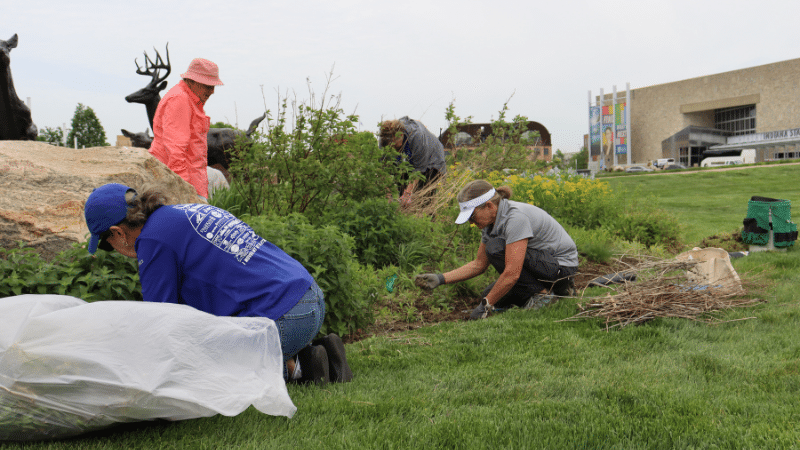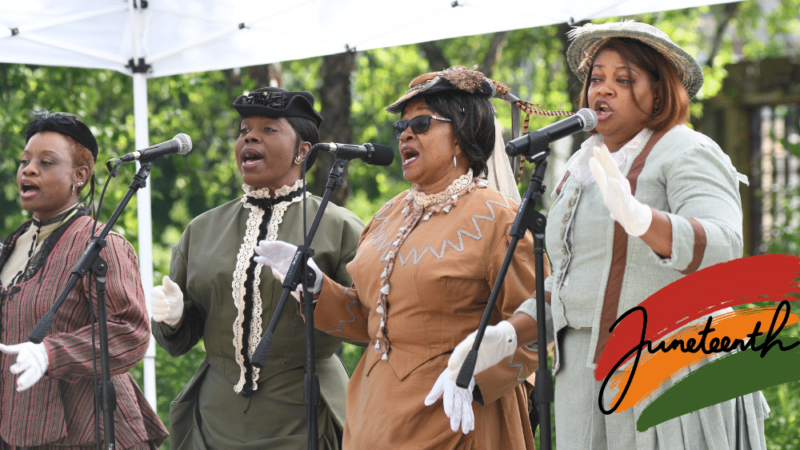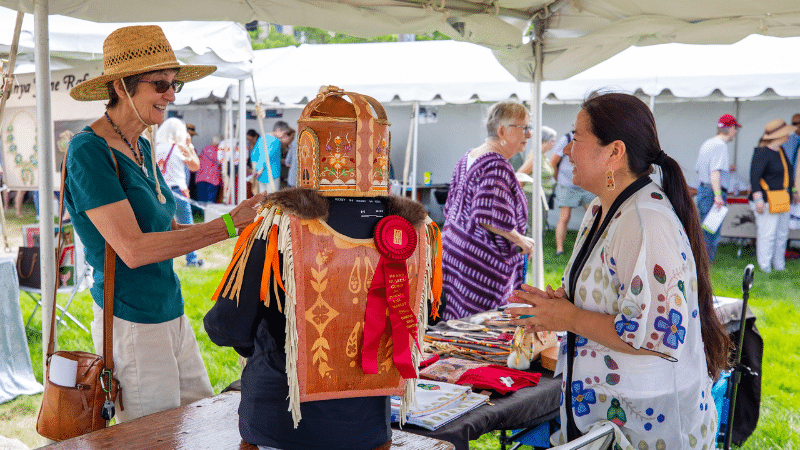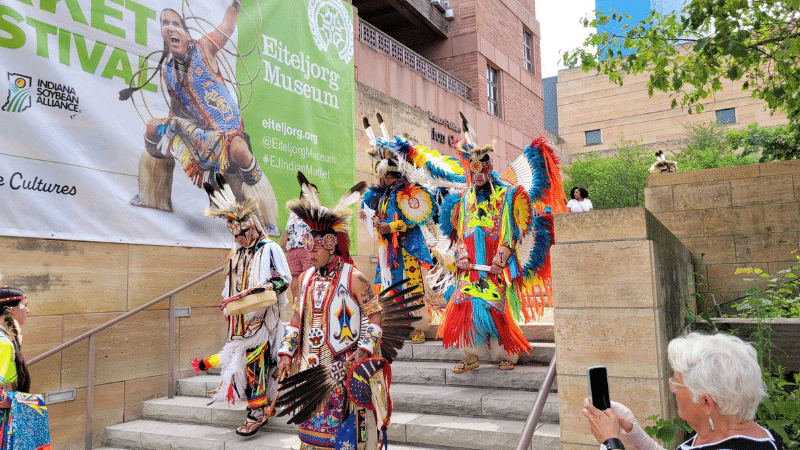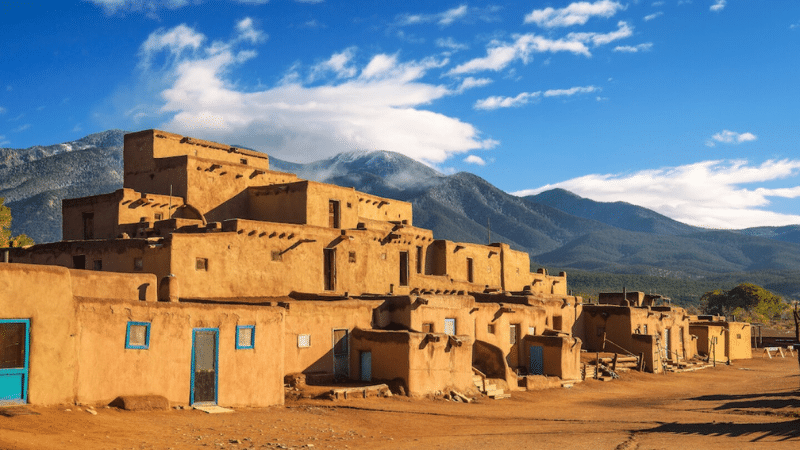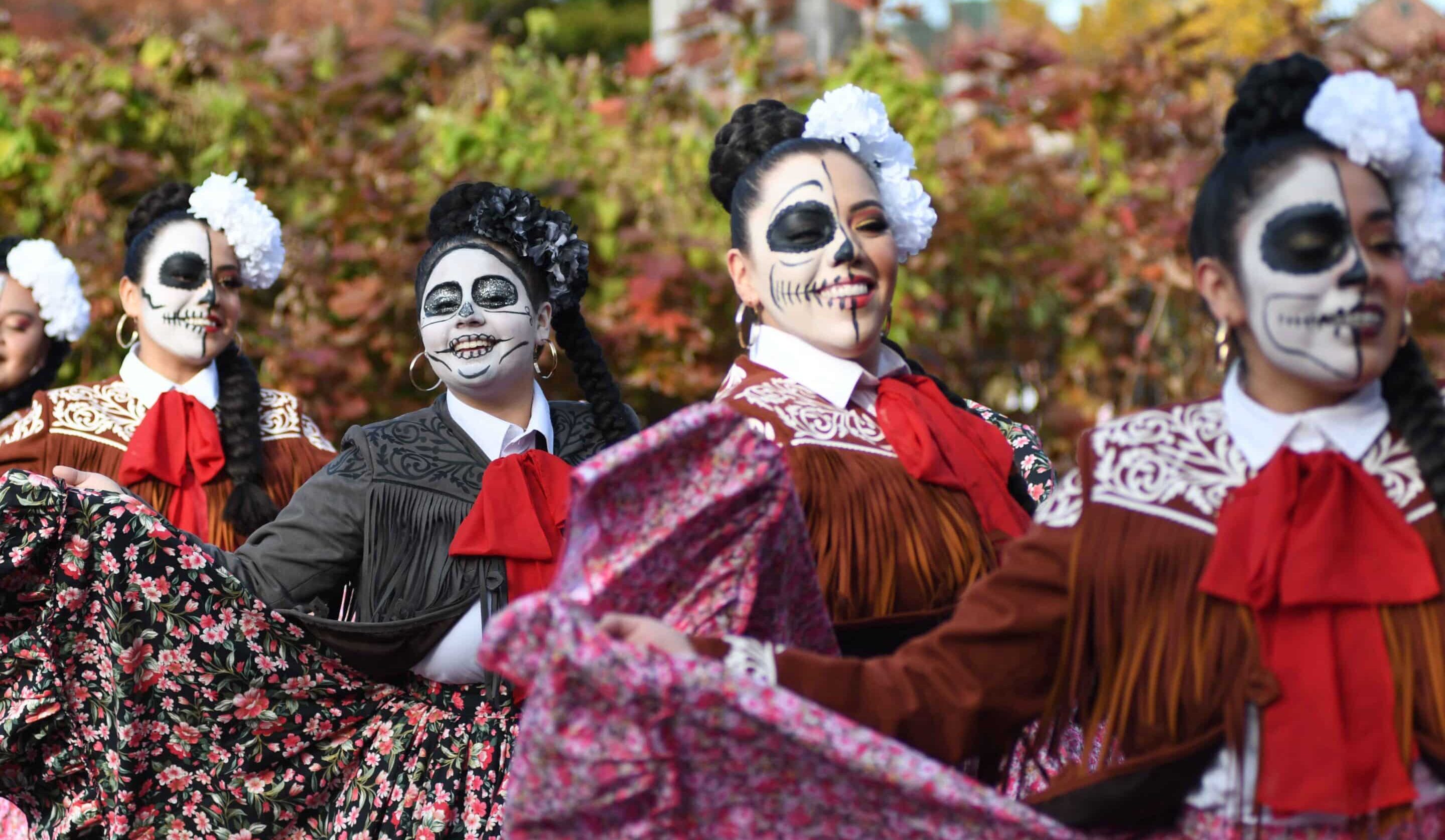No Limits: an innovative arts series opens the door to creating access for all
By Martha L. Hill, Ph.D., Eiteljorg former vice president for public programs and the Beeler family director of education
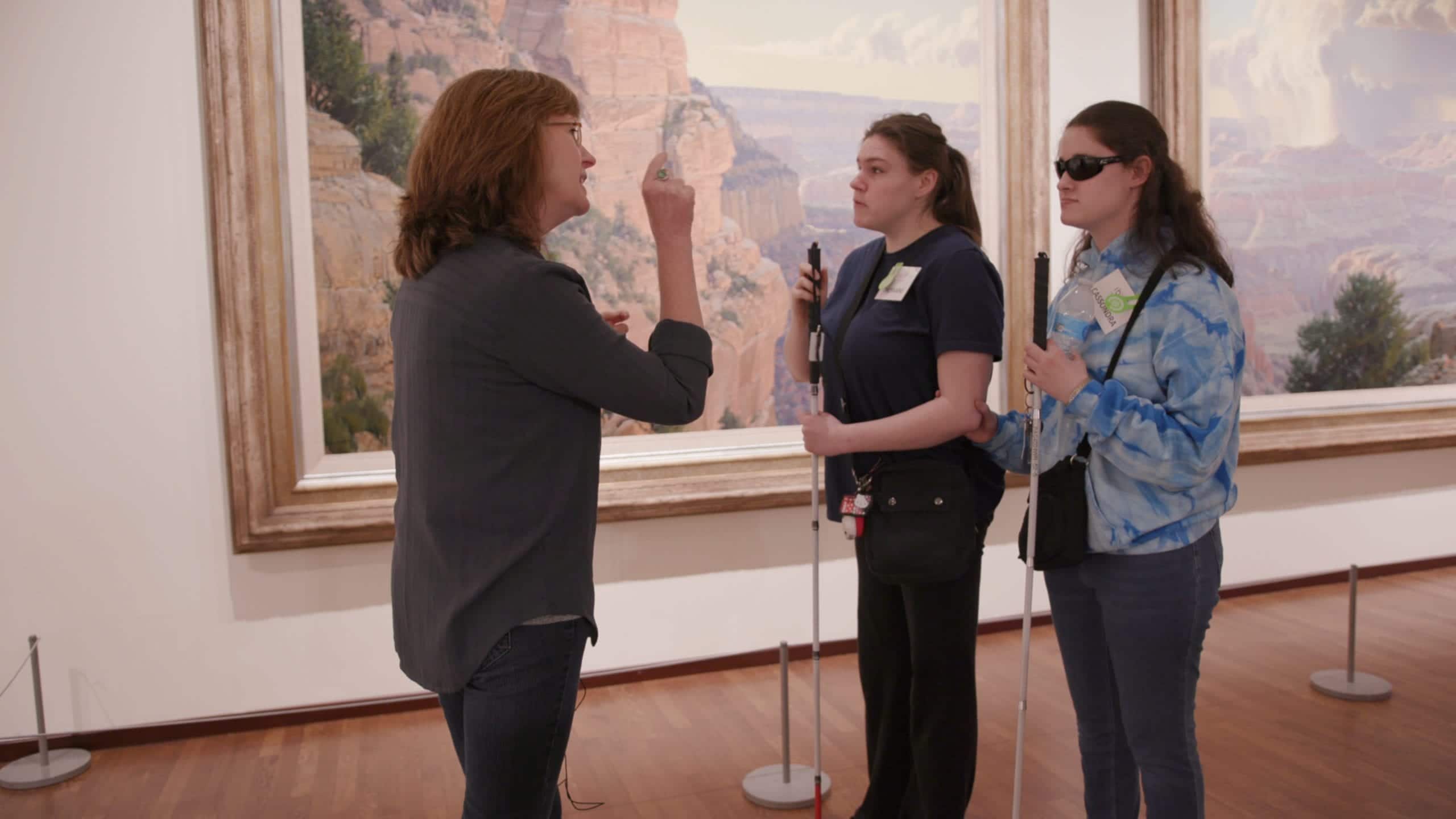
Eiteljorg Guide Sandy Schipp introduces students to the triptych painting October Suite, Grand Canyon, 1991, by Wilson Hurley. Image courtesy of 12 Stars Media
In 2018 the Eiteljorg and the Indiana School for the Blind and Visually impaired (ISBVI), along with several arts organizations, began a partnership program to strengthen accessibility at arts organizations in Indianapolis. During the three-year project called No Limits, ISBVI students are working alongside staff to identify inequities in access for the visually impaired, and create solutions that dissolve barriers to inclusion for all people with disabilities.
Eiteljorg staff and guides began work in April with the Leadership Club of 10 students from ISBVI to evaluate the museum’s accessibility. They identified strategies and solutions to increase access, particularly in current exhibition space and in the upcoming reinstallation of the Native American galleries. Students and the museum also are working with ArtMix, an organization committed to transforming lives of people with disabilities through art. After going on a guided tour, ISBVI students experienced the museum on their own in small groups. They held several brainstorming sessions with museum and ArtMix staff and recommended ways to provide greater access.
The work with the ISBVI Leadership Club has resulted in:
- Transferring the bronze stagecoach sculpture Cheyenne to Deadwood by artist Scott Rogers from the permanent collection to the museum’s education collection so it can be more accessible to visitors. Currently in the interactive R.B. Annis Western Family Experience, the sculpture has been under a Plexiglas case since 2013. The case will be removed to make the sculpture touchable.
- A meeting with museum architect Jonathan Hess to explore future alterations to the Eiteljorg building to make it more accessible.
- A meeting with staff of the nonprofit Bosma Enterprises to learn more about the Blind Square app and the use of directional beacons for the visually impaired.
Having participated in an audio training workshop, Eiteljorg guide Jen Anker is working with curators on audio descriptions for two upcoming exhibitions: Please Touch! The Sculptures of Michael Naranjo, and Quilts: Uncovering Women’s Stories.
A related focus of No Limits is giving students opportunities to create art alongside Native American artists. Each year of the initiative, the museum will bring in an artist to spend a week working with ISBVI students at their school. In September, Jason Wesaw (Potawatomi), a ceramic, fiber and mixed media artist, shared his culture with students as they worked together on a clay project.
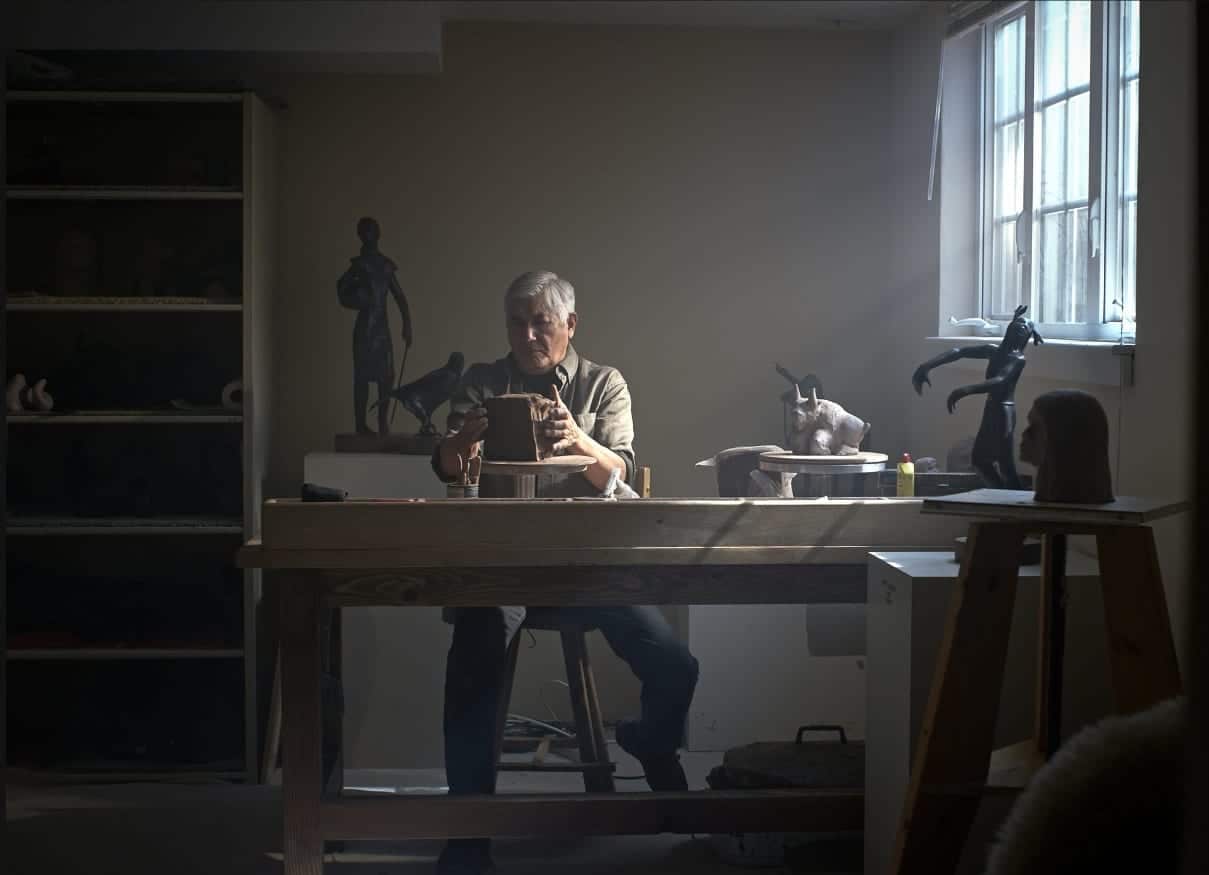 Michael Naranjo in his studio. Image courtesy of the artist.
Michael Naranjo in his studio. Image courtesy of the artist.
Sculptor Michael Naranjo (Santa Clara Pueblo) will work with students in 2020. While serving in the Vietnam War, Naranjo was wounded by a grenade that injured his right hand and took his eyesight. Naranjo creates sculptures in bronze and marble, and encourages people to touch his work so they can see it as he does. In addition to Naranjo’s residency, the Eiteljorg will hold an exhibition of his work from Jan. 18, 2020, to Feb. 9, 2021, that will be touchable, allowing museum visitors to experience art in a new way.
Rounding out the three-year project in 2021 will be a visit by a third artist. Not only will it provide engaging arts experiences for ISBVI students, the Eiteljorg will become a more inclusive, open and welcoming arts venue for a much broader audience through the No Limits partnership. This project is possible thanks to Lilly Endowment Inc.
This article originally appeared in the October 2019 issue of Storyteller magazine.


